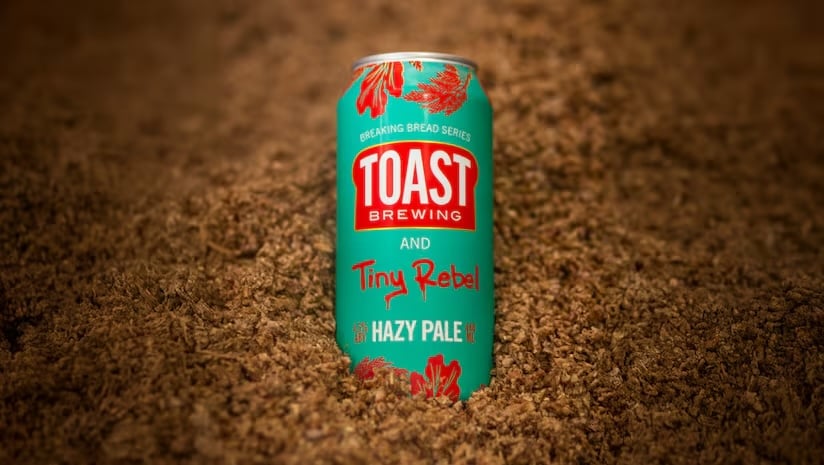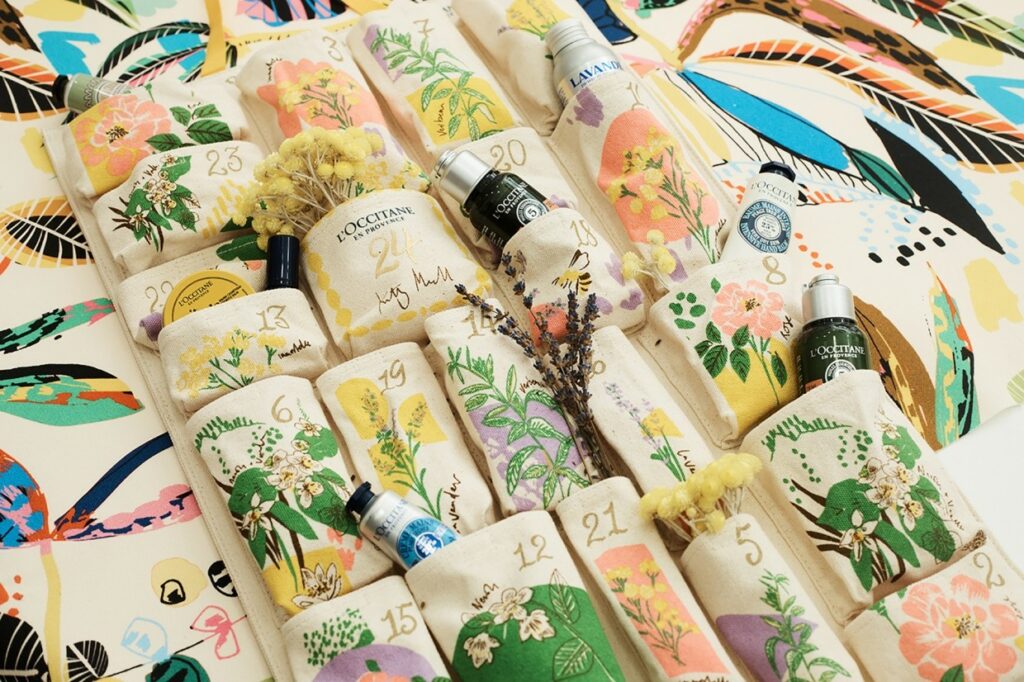Far, far away on a sun-drenched Indian Ocean island, the world’s first digital species was launched last summer. Its goal: to help protect one of the planet’s most endangered birds, the Seychelles Magpie-robin.
Identified by its musical whistle song and glossy coal black plumage, 460 of them call their namesake paradisiacal archipelago’s granitic shorelines, home. It’s a remarkable number when you consider that these lizard-and-fruit-eating endemic birds dwindled to just 20 in 1960 as a result of agricultural intensification decimating their coastal woodland habitat.
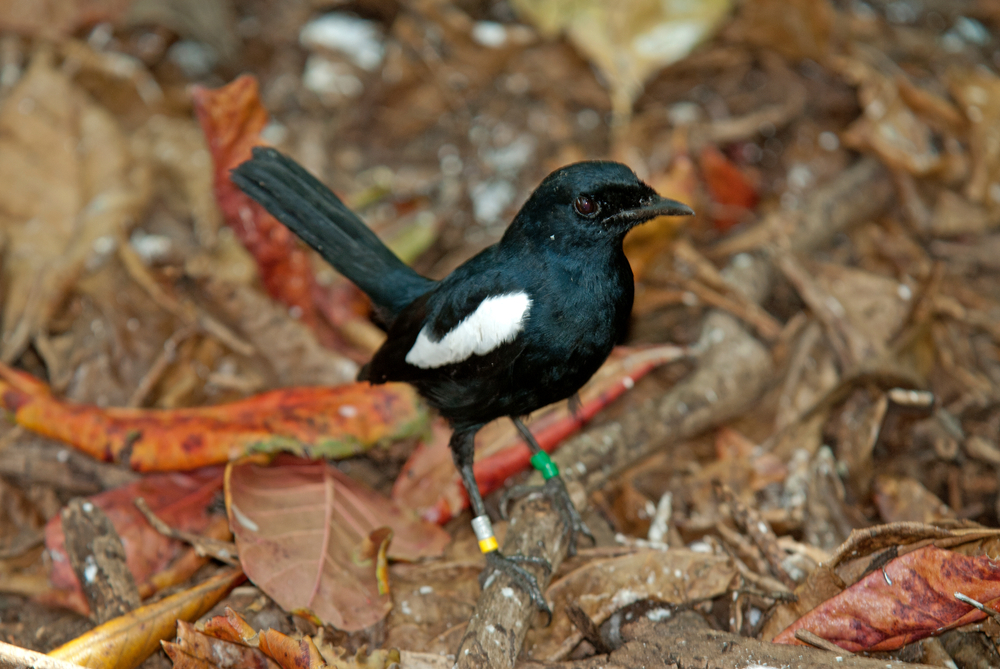
Despite ongoing efforts by Nature Seychelles, the species remains endangered. And so, with the help of IUCN (International Union for Conservation of Nature), the local NGO turned to the art world’s latest obsession NFTs as a new revenue stream to safeguard the Seychelles Magpie- robin.
Decrypting the NFT
Touted as the digital answer to collectibles, NFTs (non-fungible tokens) are a type of cryptocurrency, but instead of holding money, they contain a unique digital asset like an image or video. The non-fungible token is stored on a digital ledger known as a blockchain, then bought and sold online.
This technology has breathed new life into digital art, and sustained scores of creatives through the pandemic’s lockdowns by enabling artists to exhibit and sell their work from home. Whilst the artists retain the copyright, the NFT collectors are granted ownership of the one-of-a-kind digital tokens.
‘More than 90 per cent of the NFTs that have been bought so far have been purchased by long-time viewers that know these animals well and want to help conserve the habitat in which they have lived’
WildEarth CEO Graham Wallington
It’s only recently that these crypto collectibles have been harnessed for the benefit of wider ecosystems and wildlife like the endangered Seychelles Magpie-robin. Nature Seychelles created a total of 59 digital songbirds, each representing the living birds on Cousin Island, a dedicated nature reserve located 1.2 miles off palm-fringed Praslin. The NFTs were sold for between £7.30 and £7,300 to conservation-loving collectors.
Cleaner Cryptocurrencies
Sustainability critics are quick to point out the dinosaur-sized carbon footprints of blockchains like Bitcoin and Ethereum, on which NFTs depend. The environmental impact isn’t the NFTs per se, rather the computers gobbling vast amounts of energy to enable the transactions and transfer of ownership.
British Wildlife streaming service WildEarth has what it calls a ‘clean’ workaround. Its’ NFTs rely on eco-friendly network Polygon, which uses less than one-thousandth of one per cent of the amount of energy for a transaction than its competitors.
Big Cats and Big Ambitions
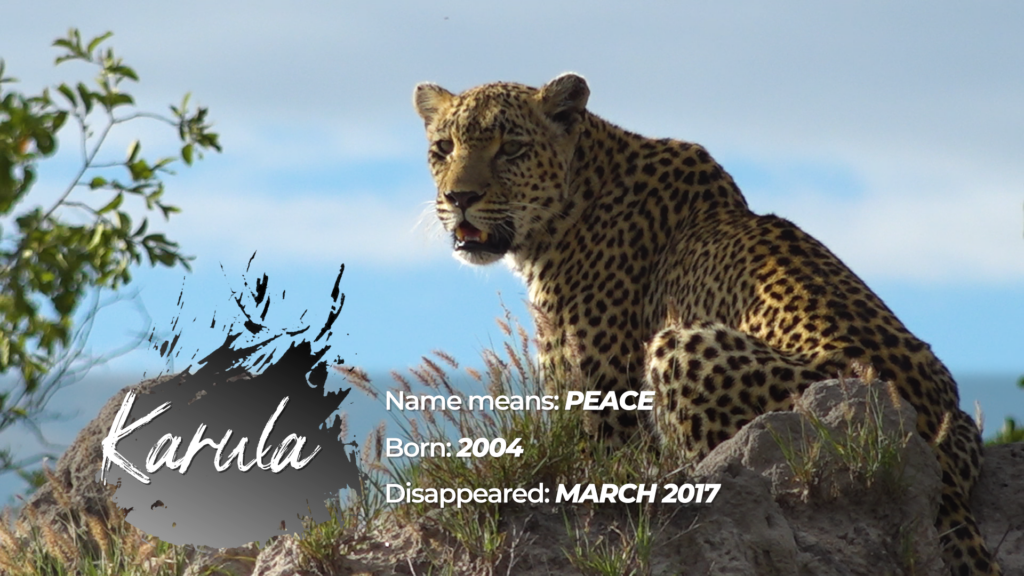
WildEarth launched its first digital NFTs for living animals in January 2022, with the aim of incentivising habitat conservation. As one of the world’s biggest broadcasters of live-streamed nature, racking up 5 million monthly viewers on platforms like Roku and Amazon, the 24/7 channel already has a captive audience.
‘(Our) Genesis Collections of NFTs are all about providing a way for our viewers to directly “pay” money (not donate) to the custodians of the wildlife habitat on which specific animal characters live,’ WildEarth CEO Graham Wallington explains. ‘Our most sought after NFTs have been for our most popular leopards, including Thandi and her daughter Tlalamba,’ he continues. These are just two of the real world animals WildEarth films on the dusty plains of Djuma Game Reserve in South Africa’s Greater Kruger National Park. Selling for $200, each of their NFTs displays the animal’s name, portrait, their animal registry ID and unique NFT serial number.
‘More than 90 per cent of the NFTs that have been bought so far have been purchased by long-time viewers that know these animals well and want to help conserve the habitat in which they have lived,’ Wallington tells The Ethicalist.‘Almost all of these collectors did not have a crypto wallet before buying an NFT from WildEarth.’ Forty per cent of every NFT sold by WildEarth is paid directly to the custodian of the wildlife habitat. So far, the project has generatedmore than £10,000 for Djuma Game Reserve.
A not so Woolly Idea
Six thousand miles away is one of Europe’s last true wildernesses: the South Western Carpathian Mountains in Romania. In its ruggedly beautiful Țarcu range, a herd of 80 heavy-breathing bison are being rewilded with the help of NFT art.
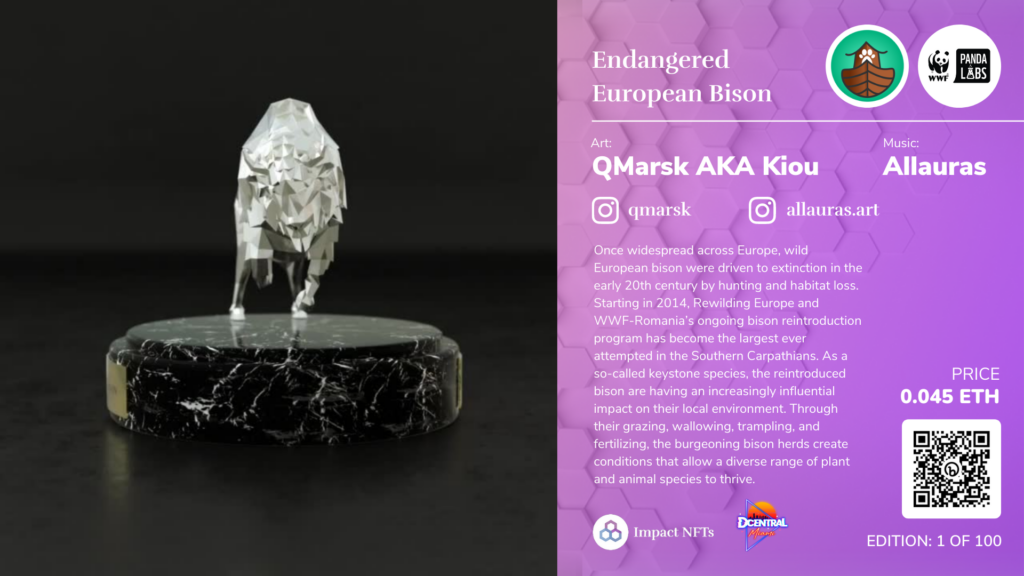
World Wildlife Fund’s (WWF) innovation arm Panda Labs has joined forces with Hong Kong climate change start-upCarbon Base to support this keystone species, which was driven to extinction in Romania around two centuries ago.
A highlight of their NFT Genesis Campaign is a colourful bison bust superimposed with the ridges of the Carpathians. The NFT 3D animation (of which 50 per cent of the sales go to rewilding the bison) has been designed by virtual reality art director and performer Topher Sipes. He’s one of fifty or so NFT artists whose work collectors can browse on www.impactnft.org a platform created to engender positive social, cultural and sustainable development.
Physical and Virtual Galleries
Award-winning Singaporean photographer Chin Leong Teo’s work is also available to buy and trade on ImpactNFT Alliance’s website. ‘They’re all unique, that’s why they’re called non-fungible,’ Executive Director of ImpactNFT Alliance Jo Pan says over Zoom. ‘Every single impact NFT has a story.’
Teo’s powerful ‘Comfort in Adversity’ captures two Vietnamese farming sisters dwarfed by an expanse of drought-ravaged cracked soils. This particular NFT is a collaboration with Hong Kong-based environmental NGO, Earth.org, who participated in the Asian city’s first Sustainable NFT Art Exhibition.
Held at Soho House last October, it was hosted in conjunction with the ImpactNFT Alliance. As well as supporting one of the first indigenous-owned and managed conservancies in East Africa (Nashulai Maasai), a percentage of the proceeds went to ocean clean-up projects led by www.OCN.ai and www.ultramarineocean.com.
Even the United Nations is catching on to the power NFT collectors have in influencing environmental impact and change. Last November, UN-backed NFT initiative: DigitalArt4Climate hosted a virtual exhibition called ‘Humanity challenged by climate change’ at Glasgow’s COP26, showcasing the runners up of its NFT art contest.
Motivated to inspire young people to take action against the global climate crisis, it’s just one more example of how NFT art can reach a whole new demographic.
Now, more than ever, conservation charities need to look to more creative and agile solutions, like non-fungible-tokens, to fundraise for our fragile earth’s future.






